Instructions for Side by Side Printing
- Print the notecards
- Fold each page in half along the solid vertical line
- Cut out the notecards by cutting along each horizontal dotted line
- Optional: Glue, tape or staple the ends of each notecard together
Respiratory Therapy-Chapter 4 (Exam 3)
front 1 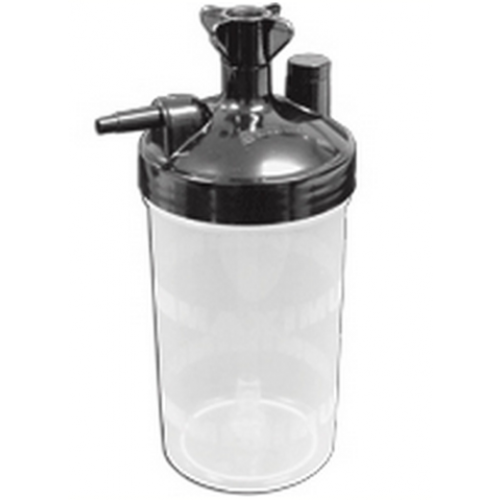 What is pictured? | back 1 A bubble humidifier. |
front 2 What happens when you obstruct the bubble humidifier or kink the tubing? | back 2 The pop off valve alarm sounds, however the device still produces the same amount of bubbles. |
front 3 What happens when you loosen the humidifier jar and kink a non-kinkable tubing? | back 3 The pop off valve alarm does not sound. |
front 4 What happens when you kink the tubing with a bubble humidifier at a flow rate >15 L/M? | back 4 The pop off valve alarm constantly went off, the bubbles were much faster. |
front 5 What are some reasons to use Humidity? | back 5 - It makes the patient more comfortable - It's used to bypass the patients upper airway by intubation or inserting an endotracheal tube. Which provides 100% humidity at 37 degrees. |
front 6 What is absolute humidity at body temperature? | back 6 It is 44 mg/ L which equals 100% For example, if asked if a patient has 22 mg/ L , what percent humidity do they have? They will have 50% humidity. |
front 7 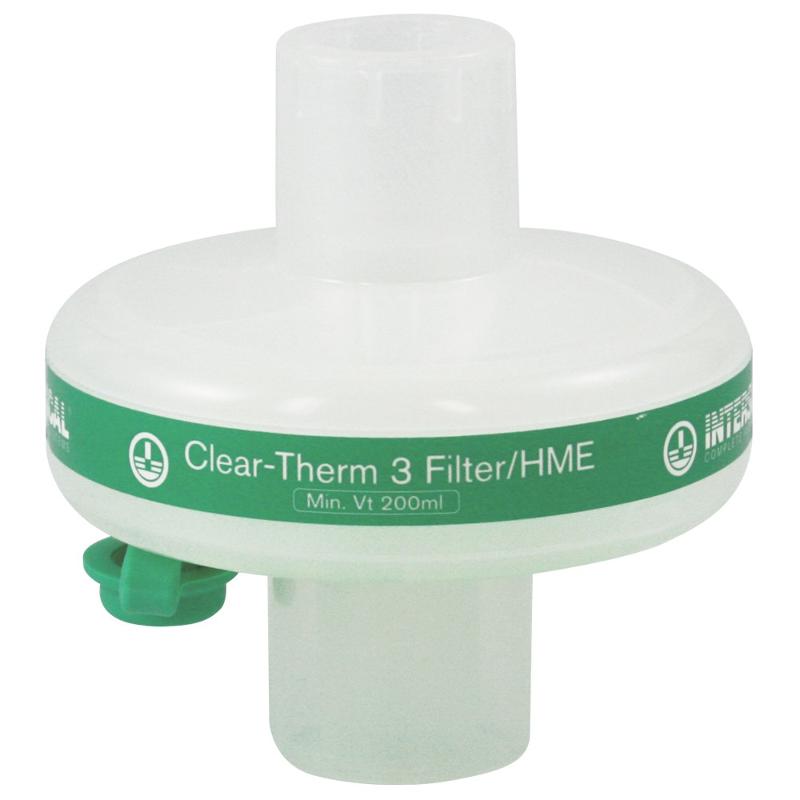 What is shown? | back 7 An HME |
front 8 What does an HME do? | back 8 It is a heat and moisture exchanger which can attach to an endotracheal tube. It has an aerosol mode that only allows air in. |
front 9 What are some advantages of using an HME? | back 9 1. It allows you to be out and about 2. It's cheaper 3. It decreases the chance of infection 4. It leaves no condensation |
front 10 What are the limitations of using an HME? | back 10 1. The patient has to have a body temperature in the normal range. 2. Can only be used on patients with normal tidal volumes. 3. It can't be used on patients with lots of secretions |
front 11 What effect does moisture have on HME function? | back 11 IT causes an increase resistance. |
front 12 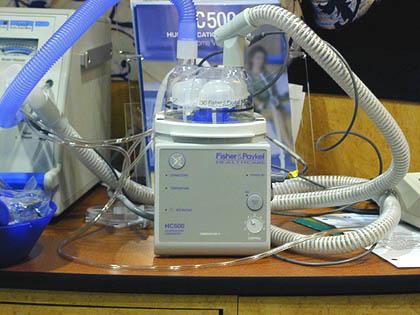 What is shown? What is its advantage? | back 12 A wick humidifier with heated wire technology. Does NOT produce a lot of condensation. The temperature at the humidifier and the WYE should be the same. |
front 13 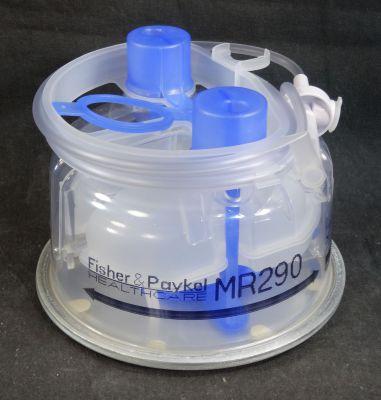 What is shown? | back 13 A cascade with non heated wire technology. This creates tons of condensation. |
front 14 What general types of humidifiers are the most effecient? | back 14 Heated humidifiers because they keep airways and secretions moist. |
front 15 What are two advantages of using a continuous feed system to fill a humidifier? | back 15 You don't get any leaks Labor savings |
front 16 What are two disadvantages of using a continuous feed system to fill a humidifier? | back 16 1. Its more expensive 2. If it malfunctions you get too much water in the unit and can possible drown them with water. |
front 17 Define humidity and how it differs from percent humidity? | back 17 Humidity is the amount of water in a given volume of gas. Percent humdity is dependent on temperature. For example at a body temperature of 37 degrees Celsius you have 44 mmg/L ,@ 100% humidity. at 22 mg/L you have 50% humidity. |
front 18 What are two reasons for using humidifiers in the clinical setting? | back 18 1. It can make the patient feel more comfortable 2. Provides 100% humidity at 37 degrees celcius |
front 19 What 3 complications can result if inadequate humidification is provided? | back 19 1. Patient can get thick, dehydrated secretions 2. Dry, non productive cough 3. Increased airway resistance |
front 20  What is shown? | back 20 A Large volume nebulizer |
front 21 With the LVN set at 35% and the flow meter at 10 L/M, what is the total flow being delivered? | back 21 Ratio: 5:1 (5 + 1) x (10 l/m) = 60 L/M |
front 22  What is shown? | back 22 Corrugated Tubing |
front 23 If you put water in the corrugated tubing attached to the LVN, what happens? | back 23 Water creates back pressure and it cant entrain room air. A water trap should be used in this cause. |
front 24  What is shown? What are they used for? | back 24 An aerosol mask (used for spontaneous breathing patients) |
front 25 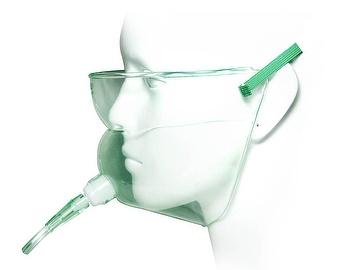 What is shown? What are they used for? | back 25 A face tent. (used for patients with injuries to the face) |
front 26 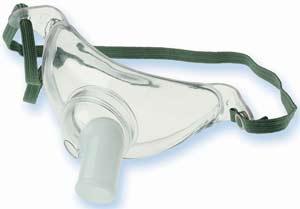 What is shown? What are they used for? | back 26 Tracheotomy collar (used for spontaneous breathing trached patients.) |
front 27  What is shown? What are they used for? | back 27 Briggs adapter (T piece) (used for intubated patients.) |
front 28 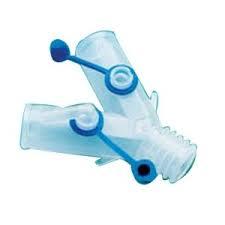 What is shown? | back 28 A WYE It's a valve that lets patient inhale (the valve opens.) and closes when the patient exhales (exhalation valve opens.)so they don't re-breathe their CO2. |
front 29 What type of humidifier would use on a nasal cannula set at 2 L/M | back 29 None, the AARC guidelines states that a bubble bottle should be used at 4 L/M or above, there is sufficient humidity in room air to meet the patients need. |
front 30 What type of humidifier would use use on a nasal cannula running at 6 L/M? | back 30 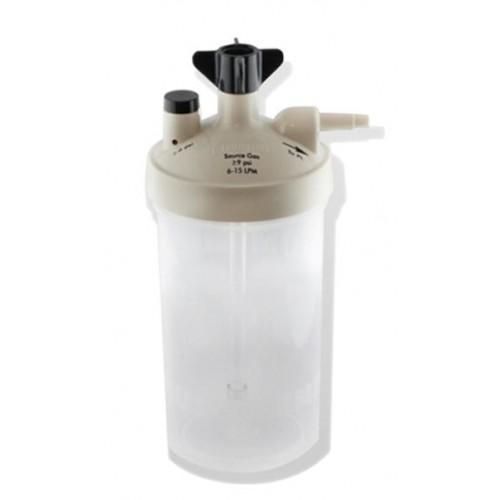 A bubble humidifier bottle. Because it is an AARC requirement. A this Liter Flow it can cause patient discomfort. |
front 31 What type of humidifier would use use on a post operative patient on short term mechanical ventilation? | back 31 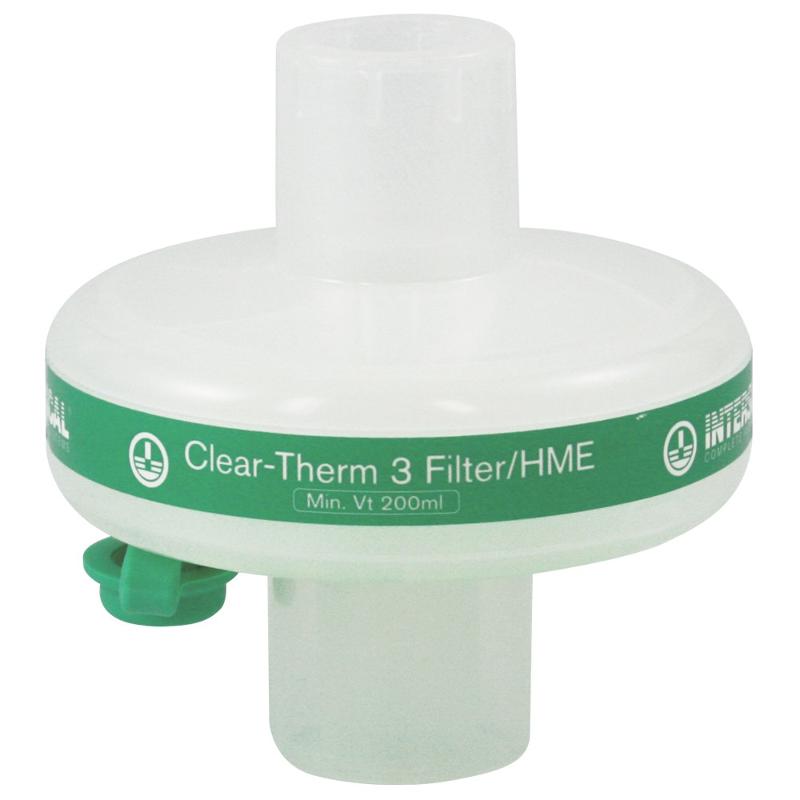 an HME. Because it is less expensive. |
front 32 What type of humidifier would use use on a long term mechanically ventilated patient with think, dry secretions. | back 32 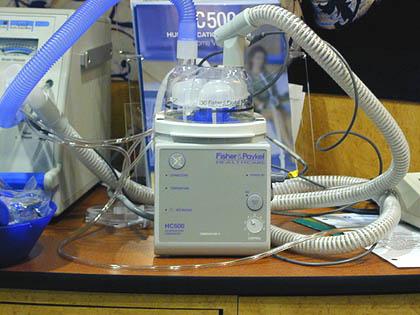 A heated humidifier Because it can keep the secretions moist. |
front 33 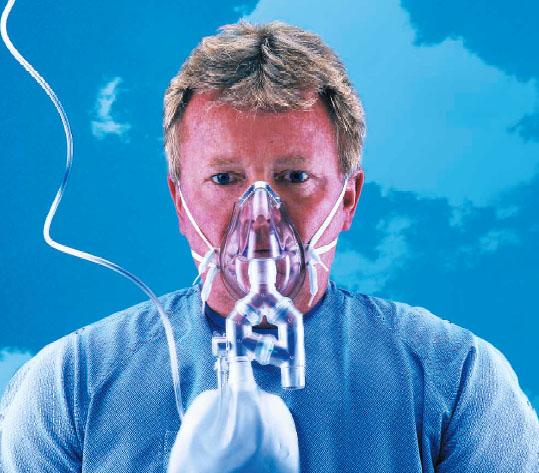 List two differences between a high flow nonrebreathing mask (HiOX) and a regular nonrebreathing mask. | back 33 1. A HiOX mask can be used in conjunction with a nebulizer to give patients treatment. A NRM can't do this. 2. A HiOx has the option to allow room air to fill the patients dead space by the sequential dilution valve, if the patient's tidal volume exceeds .75 liters and empties the reservoir. |
front 34 Explain why a high FiO2 would occurs if the venturi device was covered with a sheet? How does this effect the overall output? | back 34 This increase in FiO2 would occur because the sheet is blocking the ports, meaning that less room air is being entrained. The overall output would decrease the total flow. |
front 35 What is the formula for estimated flow demand? | back 35 Ve x 3 = Estimated Flow demand |
front 36 Mrs. Lan is a 70 year old woman with COPD who is admitted to the ER wearing a nonrebreathing mask at 10 LPM. Mrs. Lan, who was awake and alert when the ambulance arrive is now extremely lethargic and somnolent. The ER physician orders you to change the oxygen delivery device to a nasal cannula. Explain the cause for the patients lethargy. | back 36 Because Mrs. Lan is a CO2 retainer, her stimulus to breathe is the lack of oxygen. With the high FiO2 that she is receiving from the NRM, her PaO2 has risen, and her chemo-receptors are no longer telling her to breathe. |
front 37 If the patient were to remain on the NRM for at least 24 hours, what complications / hazards can result from: 1. The delivery method? 2. The high oxygen concentration? | back 37 1. The patient can get pressure sores on their nose. 2. The patient may get oxygen toxicity, which can knock out the hypoxic drive in COPD patient. |
front 38 A patient is on a Venti mask using an FiO2 of 28%. The patient is noted to have a minute ventilation of 15 L/M. what is the minimum liter flow, at this FiO2 required to meet the patients inspiratory flow demand? | back 38 First, we have to find the estimated flow demand. (15 x 3 = 45 L/M) Next: FInd the entrainment ratio for 28% = 10:1 (10+1) x ? = 45 L/M 11 x ? = 45 L/M 11 11 x = 4 L/M |
front 39 Why is a minimum flow rate of 5 L/M recommended for oxygen delivery by mask? | back 39 To flush out the exhaled CO2 so the patient does not re-breathe it. |
front 40 Why will an air entrainment mask never deliver 100% oxygen? | back 40 Because it always entrains room air. |
front 41 You observe a patient wearing a NRM mask and note that the bag completely deflates with each inspiration. What actions should be taken? | back 41 You should increase the liter flow. |
front 42 What Oxygen delivery device would you recommend to a patient who has just been resuscitated and is spontaneous breathing? | back 42 A Nonrebreathing mask. |
front 43 List 3 factors that will affect the FiO2 delivered by a low flow oxygen system? | back 43 1. The patients Vt 2. The patients RR 3. The liter flow |
front 44 List two advantages of using oxygen delivery devices such as the mustache reservoir or pendant cannula? | back 44 1. Saves money 2. Conserves O2 |
front 45 Explain how the pulse device works? | back 45 Works at the start of a patient's inhalation. |
front 46 Describe an easy method of determining the number of stages in a multistage regulator? | back 46 Count the number of pressure relief valves. |
front 47 Which of the following is considered a high flow (fixed performance) oxygen delivery system(s) a. Nasal Cannula b. Nasal catheter c. Air entrainment d. partial rebreathing mask | back 47 C |
front 48 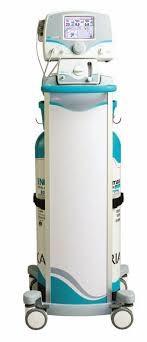 What is shown? what three monitors does this system include? Where are these gases sampled? | back 48 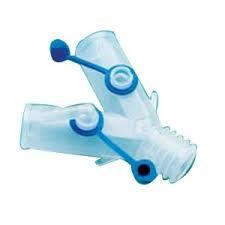 an INOmaxDS *for nitric oxide therapy. It has an oxygen, nitrogen dioxide and nitric oxide monitor. The gases are sampled right before the patients WYE. |
front 49 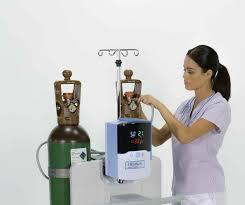 What are 5 reasons to utilize heliox therapy? | back 49 1. To manage asthmatic patients w/ acute respiratory failure 2. Treat postextubation stridor 3.Adjunct with the treatment of refractory croup 4. To administer anesthetic gases to patients with small dia tubes 5. TO provide support for patients with severe airway obstruction |
front 50 What conclusion can you make about the density of this mixture? What type of flow does it produce and how can it be delivered to the patient. | back 50 Heliox is less dense then oxygen. It can create, smooth laminar flow and can be delivered to an intubated patient or one who is using a non rebreathing mask. |
front 51 What are the ratios for an: 80/20 70/30 60/40 | back 51 1.8 (brown body, green shoulder) 1.6 (green body brown shoulder.) 1.4 (two separate cylinders.) |
front 52 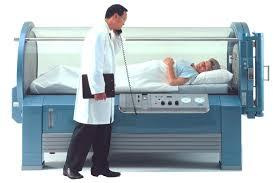 What does a hyperbaric oxygen expose the patient to? What 10 conditions does it treat? | back 52 It exposes the patient to greater than atmospheric pressure and 100% oxygen. - decompression sickness (divers surface to quickly.) - Air embolism - CO poisoning - Smoke inhalation - Wound healing - Gas Gangrene - Thermal injuries -Refractory Osteomylitis -Cyanide Poisoning - Anaerobic infections |
front 53 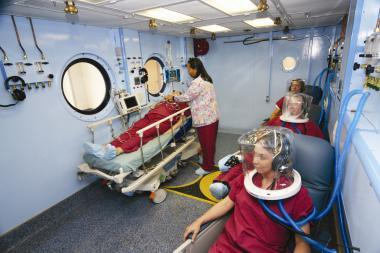 What is shown? What gas compresses the chamber? What gas does the patient breathe in? | back 53 A multiplace chamber Room air compresses the chamber The patient breathes in 100% oxygen Advantage: Caregivers are able to get pressured and get inside to help multiple patients. |
front 54 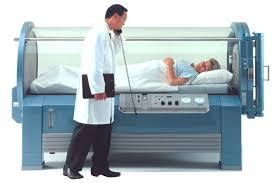 What is shown? What gas compresses the chamber? What gas does the patient breathe in? | back 54 A monoplace chamber oxygen compresses the chamber the patient breathes in 100% oxygen |
front 55 What are the contraindications for hyperbaric oxygen therapy. | back 55
|